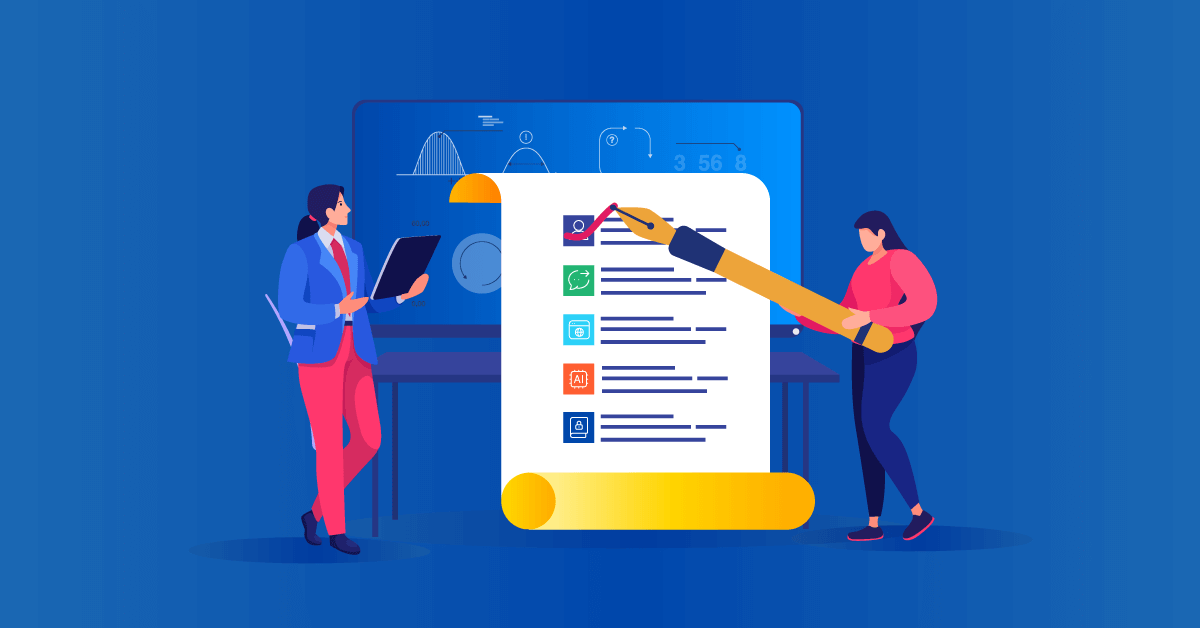The workplace is changing day by day. Your employees know that, and they look for companies that can give them more opportunities to evolve. But how exactly are you going to offer them what they need if your training doesn’t stick to memory? Your eLearning content must be updated to fit your employees’ needs, or your training attempts won’t make much of a difference.
When do you need to refresh eLearning content?
Staff training and development is a dynamic process. So, you should reevaluate your training strategy often and update eLearning content regularly. But how can you tell if your training content is approaching its expiration date? Here are 5 unmistakable signs that it’s time to get to work and revamp your content:
1. Employees are not engaged in training
Learning analytics are painfully cruel. But they’re incredibly accurate in uncovering red flags, like low engagement. Low learner engagement is pretty much the worst news you can get. Why? Because it implies that training has no impact on employees.
Check for the following signs:
- Do employees go through the course real quick without accessing additional resources?
- Do they log in to the course frequently? Or do you need to send them reminders?
- Do they take part in course discussions or complete optional assignments? Or are they doing the bare minimum?
These are all signs that employees feel they have “better things to do with their time.” In other words, they’re not engaging with the content. Which means that they’re unlikely to fully understand and retain the information.
But here is some good news: you can create an engaging training experience for all using LMS software. Try adding live, interactive webinars and ILT sessions. Create a point-based system to motivate employees to join course discussions or complete group assignments. Way to shake things up and break the monotony of learning alone!
Interactive and social learning elements with a hint of gamification are the recipe for an effortless and inclusive learning environment. The last (not-so-secret) ingredient of engagement? Let employees have their training when it works best for them in a familiar and casual way. Hello, mobile learning!
2. Employees are struggling to finish the training (or vice versa)
Back to those learning analytics again. This time, look for signs that show your online training content doesn’t match employee skills:
- How long does it take for employees to complete a course?
- Do they seem to go over certain units repeatedly? Or do they skip most of them?
- Are they doing surprisingly well in assessments? Or do they have to retake the quizzes several times?
- Do they ask a lot of questions because they haven’t understood the material?
Either way, you need to refresh your eLearning content to match your employees’ knowledge level.
If the overall level of the course is too easy, they’ll become overly confident. That means they’ll just scan through the training materials and miss useful or new information.
And if the course is out of their depth? Then, you’re placing unnecessary pressure on them. And you might be causing cognitive overload.
3. Your industry is changing
Nowadays, most industries are disrupted by technology. According to the 2019 Global Human Capital Trends survey by Deloitte, 41% of respondents are using automation technologies extensively or across multiple functions.
For example, Virtual Reality is invading healthcare and automation is transforming manufacturing. As for data analysis tools, they’re used across most industries to identify trends, patterns, blind spots, and make accurate predictions. The survival of individual companies depends on whether they’ll be able to adopt these new technologies.
If you’re in a technologically advanced industry, you probably already know that your training courses remain relevant only for so long. Most of the information you include in employee training becomes insufficient or obsolete in a few months. So how can you keep up when you need to upskill employees and update eLearning content frequently?
Off-the-shelf eLearning content works best in these instances. Off-the-shelf courses are faster to deploy and significantly less costly, while they’re still fully customizable. Most importantly, the content is standardized. This way, you can be sure all the information is accurate and adheres to the official standards.

4. Your business is evolving
Your business is constantly growing. New procedures and tools are in place to increase workplace productivity and streamline operations. Perhaps you’re even rebranding your business or introducing new products or services to the market.
Wherever your company is headed, your employees are the means to get there. To achieve your business goals, teach employees the tools and strategies to work toward them.
When you’re growing your business, perhaps the costs of eLearning development seem a little over the top. But the truth is that eLearning content development can be done on a budget. Especially if you already have worthy corporate training materials that you can repurpose.
Here’s an idea: why not turn on-site seminars into a series of short videos or podcasts and upload them on your LMS? Then, add a few infographics to wrap up the key points (and satisfy visual learners), and a couple of quizzes. There — you have just created a brand new training course!
5. Employee performance is unsatisfactory
It makes sense to run assessments before and after a training program to gauge employee skill level and progress. But on-the-job performance is undeniably the best way to tell whether your courses deliver results.
Let’s say your sales employees have recently finished their training. Is there an improvement in sales or customer satisfaction? If not, it’s time to update eLearning content so that your staff can apply their knowledge.
Training courses are often all about theory and don’t offer opportunities for real-world practice. The solution? Think branching scenarios and simulations that reflect everyday situations your workforce meets on the job. These training activities also help employees test their skills and get immediate feedback without consequences.
Consider turning long-form types of content into short videos or infographics. Employees can use these microlearning resources either as just-in-time training tools or anytime-knowledge refreshers.
Next steps
Offering relevant and up-to-date training empowers your employees. And it also differentiates your company from other employers. So, what are you waiting for? Invest in an LMS to develop and update training courses easily and cost-effectively.
| Tags: Training Content



